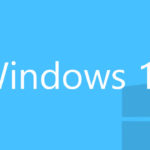Examples Of Trojan
━━━━━━━━━━━━━
Examples of Trojan malware attacks
Trojan malware attacks can inflict a lot of damage. At the same time, Trojans continue to evolve. Here are three examples.
Emotet banking Trojan
After a long hiatus, Emotet’s activity increased in the last few months of 2017, according to the Symantec 2018 Internet Security Threat Report. Detections increased by 2,000 percent in that period. Emotet steals financial information, among other things.
Rakhni Trojan
This malware has been around since 2013. More recently, it can deliver ransomware or a cryptojacker (allowing criminals to use your device to mine for cryptocurrency) to infected computers. “The growth in coin mining in the final months of 2017 was immense,” the 2018 Internet Security Threat Report notes. “Overall coin-mining activity increased by 34,000 percent over the course of the year.”
Malwarebytes Anti-Malware free Premium keys
ZeuS/Zbot
This banking Trojan is another oldie but baddie. Zeus/Zbot source code was first released in 2011. It uses keystroke logging — recording your keystrokes as you log into your bank account, for instance — to steal your credentials and perhaps your account balance as well.
Examples of Trojan Horse Virus Infection
Exploit
It contains data or code that abuses a vulnerability within application software that’s operating on your endpoint.
Backdoor
It gives malicious users remote access over the infected computer. They can do whatever they want such as sending, receiving, launching and deleting files, displaying data and rebooting the endpoint.
Rootkit
These are designed to hide certain objects or activities in your system. This can effectively prevent malicious programs being detected.
Trojan-Banker
Its purpose is to steal your account data for online banking systems, e-payment systems and credit or debit cards.
Trojan-DDoS
This Trojan horse virus can start up the Denial of Service (DoS) attacks. Not only it can affect endpoints, but also websites. By sending multiple requests – from your computer and several other infected computers – the attack can overload the target address which leads to a denial of service.
Trojan-Downloader
Trojan-Downloaders can download and install new versions of malicious programs onto your computer – including Trojans and adware.
Trojan-Dropper
This is used to install Trojans and other viruses into the computer. This can also conceal detection of malicious programs. If you’re using a weak or outdated antivirus, some of them can’t scan all of the components inside this type of Trojan horse virus.
Protecting Yourself from Trojan Horse Virus
Finding the Trojan horse on your computer is not an easy task. Yet, you can try using these methods to avoid in the first place:
The given examples above aren’t the only ones out there. The cyber criminals invent a new set of Trojan horse viruses all the time. Yet, there are ways to at least
- Use a firewall. Firewalls block unwanted connections, which can help prevent Trojan horse viruses.
- You must secure your computer with an anti-virus software or anti-spyware software. You should also keep them updated always.
- You should always keep your security patches up-to-date for your operating system.
- You must observe caution when opening email attachments, clicking on unfamiliar links, downloading and installing certain programs from publishers that you don’t trust and visiting strange websites as some of these attachments, links, programs or websites could be Trojans that contain viruses.
Stay Protected from Trojan Horse Virus
Trojan horse virus is undeniably hard to spot on. Even ordinary antivirus might not be able to track the nasty fake programs on an ordinary user’s computer.
In Comodo, we offer Advanced Endpoint protection to many businesses to improve their endpoint security even more. Comodo Advanced Endpoint Protection provides a lightweight, scalable Default Deny Platform with a unique endpoint security approach, which results in complete protection and enterprise visibility. The app-based platform eliminates complexity and solution overlap. Provisioned in minutes, Advanced Endpoint Protection also includes unified IT and security management console, that through an app-enabled platform reduces the effort of managing your Android, iOS, OSX, Linux, and Windows devices, on every segment of your physical and virtual networks.



